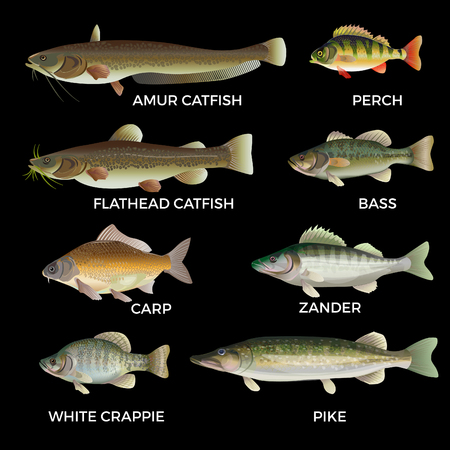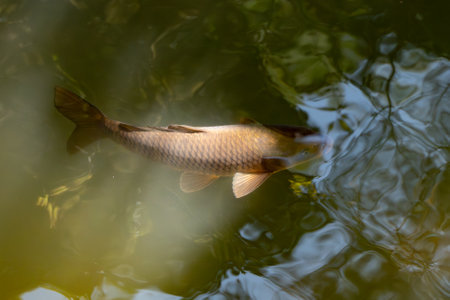Understanding Snook Habits and Habitat
If you want to catch snook year-round, the first step is understanding their habits and where they like to hang out. Snook are smart, elusive fish that respond to changes in water temperature, tide, and food availability. Knowing how they behave through the seasons helps you stay one step ahead.
Snook Biology Basics
Snook (Centropomus undecimalis) are a warm-water species found mostly along the Gulf Coast and Atlantic waters of Florida. They’re known for their strong fight, making them a favorite among inshore anglers. Snook are protandric hermaphrodites—meaning they start life as males and can later change to females. This impacts spawning behavior, which usually peaks during summer months when water temperatures rise.
Preferred Environments
Snook prefer shallow coastal waters with structure like mangroves, docks, bridges, and grass flats. These areas provide cover from predators and ambush points for feeding. Water temperature is key: snook thrive between 70°F–85°F and become sluggish or even die off when temps drop below 60°F. During colder months, they seek warmer spots like power plant outflows or deep backwater canals.
Common Snook Habitats by Season
| Season | Main Habitat | Key Behavior |
|---|---|---|
| Spring | Mangroves, river mouths | Feeding aggressively after winter; moving toward spawning zones |
| Summer | Beaches, passes, inlets | Spawning season; active during tides |
| Fall | Mangroves, flats, creeks | Following baitfish migration; preparing for cooler weather |
| Winter | Backwaters, deep canals, warm springs | Lethargic; conserving energy in warmer pockets |
Tide and Time Factors
Tides play a big role in snook movement. Incoming tides bring baitfish into estuaries and trigger feeding activity. Outgoing tides can concentrate bait near structure, making it easier for snook to ambush prey. Early morning and late afternoon are usually prime times to target them, especially when these time slots align with moving tides.
Bait Preferences Throughout the Year
Their diet changes slightly depending on what’s available each season. Live bait like pilchards, mullet, shrimp, and pinfish work best. Artificial lures that mimic these baits also perform well if worked properly around structure.
Bait Selection by Season
| Season | Top Baits |
|---|---|
| Spring | Pilchards, live shrimp, soft plastic jerkbaits |
| Summer | Mullet, pinfish, topwater plugs at dawn/dusk |
| Fall | Sardines, swim baits mimicking baitfish schools |
| Winter | Shrimp (live or artificial), slow-sinking jigs near warm spots |
The more you understand about where snook live and how they react to their surroundings throughout the year, the better your chances of hooking one in any season.
2. Essential Gear and Tackle for Snook Fishing
To consistently catch snook throughout the year, having the right gear is just as important as knowing where and when to fish. Different seasons and conditions call for slightly different setups, so here’s a breakdown of the essential rods, reels, lines, and lures to help you gear up for success.
Rods
Snook are powerful fighters, so your rod needs to have enough backbone to handle their strong runs, especially around structure like mangroves, docks, or bridges.
| Season | Recommended Rod | Details |
|---|---|---|
| Spring/Summer | Medium-Heavy Fast Action (7 – 76″) | Ideal for casting lures near mangroves and inlets during spawning season |
| Fall/Winter | Medium Action (66″ – 7) | Better for finesse fishing in cooler waters where snook are less aggressive |
Reels
You’ll want a spinning reel that balances well with your rod and has a smooth drag system. Snook make fast runs, so a quality reel is key.
- Size: 3000–4000 series spinning reels are versatile and match well with medium-heavy rods.
- Drag: Look for a reel with at least 15 lbs of smooth drag pressure.
- Gear Ratio: A 6.2:1 ratio works great for quick retrieves when snook are chasing bait.
Fishing Line
Your line choice can make or break your hookup rate—especially when fishing around abrasive structures.
| Type | Pound Test | When to Use |
|---|---|---|
| Braided Line | 20–30 lb test | Year-round; offers sensitivity and strength for long casts and structure fishing |
| Fluorocarbon Leader | 30–40 lb test | Essential in clear water to avoid spooking snook; adds abrasion resistance |
Lures and Baits
Top Artificial Lures for Each Season:
| Season | Lure Type | Description/Usage Tips |
|---|---|---|
| Spring | Paddle Tail Swimbaits (3″-5″) | Mimics baitfish during pre-spawn feeding; great around grass flats and mangroves |
| Summer | Topwater Plugs (e.g. Zara Spooks) | Irritate aggressive spawning snook early morning or late evening near inlets or beaches |
| Fall | Suspending Twitchbaits (e.g. MirrOlure MirrOdine) | Mimics wounded baitfish; ideal when snook are ambushing prey around docks or seawalls |
| Winter | Shrimp Imitations (soft plastics or jigs) | Softer presentations work best in cold water when snook are sluggish; fish slow along bottom structure |
Live Bait Options:
- Pilchards & Threadfin Herring: Great for warmer months; cast net them early morning near bait schools.
- Shrimp: Go-to winter bait; rig under a popping cork or on a jig head near deeper holes or bridges.
- Pinfish & Mullet: Larger baits that work well in summer/fall for targeting trophy snook around structure.
Tackle Accessories You Shouldn’t Skip:
- Circle Hooks (Size 1/0 – 4/0): Help with safe hook sets and easier releases.
- Snap Swivels: Useful for quickly changing lures without retying knots.
- Pliers & Hook Removers: Must-haves for dealing with toothy mouths and deep hook sets.
The right gear can make all the difference when it comes to landing more snook—and keeping them from breaking you off in heavy cover. Match your tackle to the season, stay flexible based on conditions, and always be ready to adapt on the water.

3. Spring and Summer Snook Tactics
Spring and summer are prime time for snook fishing in Florida and other warm coastal areas. As water temperatures rise, snook become more active and move into shallow waters to feed, making them easier to locate and target. This season offers some of the best opportunities to catch trophy-sized snook, especially if you know where and how to look.
Night Fishing Near Bridges
During warmer months, nighttime can be one of the most productive times to fish for snook. Bridges with strong current flow and good lighting attract baitfish — which, in turn, attract hungry snook. Focus your efforts around light lines where shadows meet illuminated water. These are ambush zones where snook wait to strike.
Recommended Gear for Night Bridge Fishing
| Gear | Recommendation |
|---|---|
| Rod & Reel | Medium-heavy spinning combo (76″ rod) |
| Main Line | 20-30 lb braided line |
| Leader | 30-40 lb fluorocarbon |
| Lures | Swimbaits, flair hawk jigs, or live shrimp |
Sight Fishing Along Mangrove Shorelines
In spring and summer, snook often cruise along mangrove edges during higher tides looking for food. This makes sight fishing a thrilling and effective approach. Look for movement or shadows under the overhangs, then cast a soft plastic jerkbait or live bait just beyond their path and retrieve slowly.
Tips for Successful Sight Fishing
- Polarized sunglasses: Essential for spotting fish beneath the surface glare.
- Tide timing: Target rising or high tides when snook push into mangrove-lined flats.
- Stealth approach: Use a trolling motor or push pole to avoid spooking fish.
- Bait presentation: Cast ahead of moving fish, letting your lure appear natural in their path.
Best Times of Day and Conditions
The most productive times are early morning and late evening when water temperatures are slightly cooler. Overcast days can also extend feeding periods into midday. Water clarity is key for sight fishing — aim for clear conditions after stable weather patterns.
Snook Behavior by Season
| Season | Main Locations | Feeding Behavior |
|---|---|---|
| Spring | Mangroves, inlets, bridges | Aggressive; feeding before spawn begins |
| Summer | Beaches, passes, estuaries | Active; focused on spawning and post-spawn recovery feeding |
If youre targeting snook in spring or summer, remember that they’re more active during these warmer months — so match your tactics accordingly. Whether youre casting under lights at night or scanning mangrove shorelines during the day, adjust your approach based on tides, light conditions, and where the baitfish are moving.
4. Fall and Winter Strategies for Snook
As temperatures drop in fall and winter, snook behavior changes dramatically. These cooler months require a shift in tactics to stay successful on the water. Snook become more lethargic, seek out warmer water, and feed less aggressively. But with the right strategies, you can still catch them consistently.
Find Warm-Water Refuges
Snook are sensitive to cold water and will move to areas where temperatures remain more stable. Look for warm-water refuges such as:
- Residential canals: These often hold slightly warmer water due to depth and protection from wind.
- Power plant outflows: In some regions, power plants discharge warm water, attracting baitfish—and hungry snook.
- Spring-fed rivers: Consistent temperatures make these spots reliable throughout winter.
Slow Down Your Presentation
In cooler water, snook metabolism slows down, so fast-moving lures often get ignored. Instead, focus on slower retrieves and subtle movements to trigger strikes. Here’s a quick guide to effective lure types and retrieval techniques:
| Lure Type | Recommended Retrieval | Best Conditions |
|---|---|---|
| Soft plastic jerkbaits | Slow twitch-pause retrieve | Canals, mangrove edges |
| Scented soft plastics (e.g., Gulp!) | Drag slowly along the bottom | Muddy or sandy bottoms |
| Sinking twitch baits | Short twitches with long pauses | Deeper channels or structure |
Tidal Timing is Key
Tides play a major role during colder months. Focus on fishing during the warmest parts of the day—typically late morning through afternoon—when tidal movement is strongest. Incoming tides bring slightly warmer water into shallow areas, which can draw in both bait and snook.
Best Times to Target Snook in Fall & Winter:
- Late morning to early afternoon: Water has had time to warm up.
- Incoming tide: Brings food and raises water temps.
- Ahead of cold fronts: Fish tend to feed more actively before a temperature drop.
Pro Tip:
If a sudden cold snap hits, give it a day or two before heading out again. Snook will need time to adjust and relocate to warmer zones—rushing back too soon may leave you empty-handed.
By adjusting your approach with these seasonal tips, you can stay on the bite even when the weather cools down. Keep an eye on water temps, slow your roll, and let the tide work in your favor.
5. Regulations, Conservation, and Ethical Snook Fishing
Snook fishing in Florida is one of the most rewarding experiences for inshore anglers, but its important to stay up-to-date on regulations and practice responsible fishing to protect this prized species. Whether youre targeting snook during summer feeding frenzies or winter warm-ups near power plant outflows, knowing the rules helps ensure this fish remains abundant year after year.
Florida Snook Fishing Regulations
The Florida Fish and Wildlife Conservation Commission (FWC) sets specific rules for snook fishing based on region, season, and size limits. These can change depending on environmental factors like red tide or cold snaps. Always check the latest updates before heading out.
Basic Regulations by Region (As of Current Guidelines)
| Region | Open Season | Slot Limit | Bag Limit |
|---|---|---|---|
| Gulf Coast | March 1 – April 30 Sept 1 – Nov 30 |
28″ – 33″ | 1 per day |
| Atlantic Coast | Feb 1 – May 31 Sept 1 – Dec 15 |
28″ – 32″ | 1 per day |
| Monroe County & Everglades National Park | Closed Year-Round | N/A | Catching Prohibited |
Note: A valid saltwater fishing license and snook permit are required when targeting snook in Florida waters.
Catch-and-Release Best Practices
If youre targeting snook outside of open seasons or prefer not to harvest them, practicing ethical catch-and-release is key. Snook are sensitive fish and can be stressed easily if handled improperly. Follow these tips to improve their survival rate:
Catch-and-Release Tips:
- Use circle hooks: These reduce gut-hooking and increase survival chances.
- Avoid removing slime coat: Wet your hands before touching the fish.
- No gill or jaw grabbing: Support the fish horizontally with both hands.
- Keep it in the water: Especially when taking photos—limit air exposure to under 10 seconds.
- Revive before release: Hold the fish gently in the water facing into the current until it swims off strongly.
Sustainable Fishing Habits Matter
The thrill of catching a big snook is something every angler should get to enjoy—but only if we all do our part. Respect slot sizes, avoid overfishing local hotspots, and educate new anglers about proper handling techniques. By keeping conservation at the heart of your fishing trips, you’re helping ensure that future generations can experience the same excitement you do today.
Your Responsibility as an Angler
No matter the season or technique youre using—whether its sight-fishing mangroves in spring or drifting live bait near bridges during fall—ethical snook fishing starts with awareness. Stay informed, follow regulations, and treat every catch with care.

